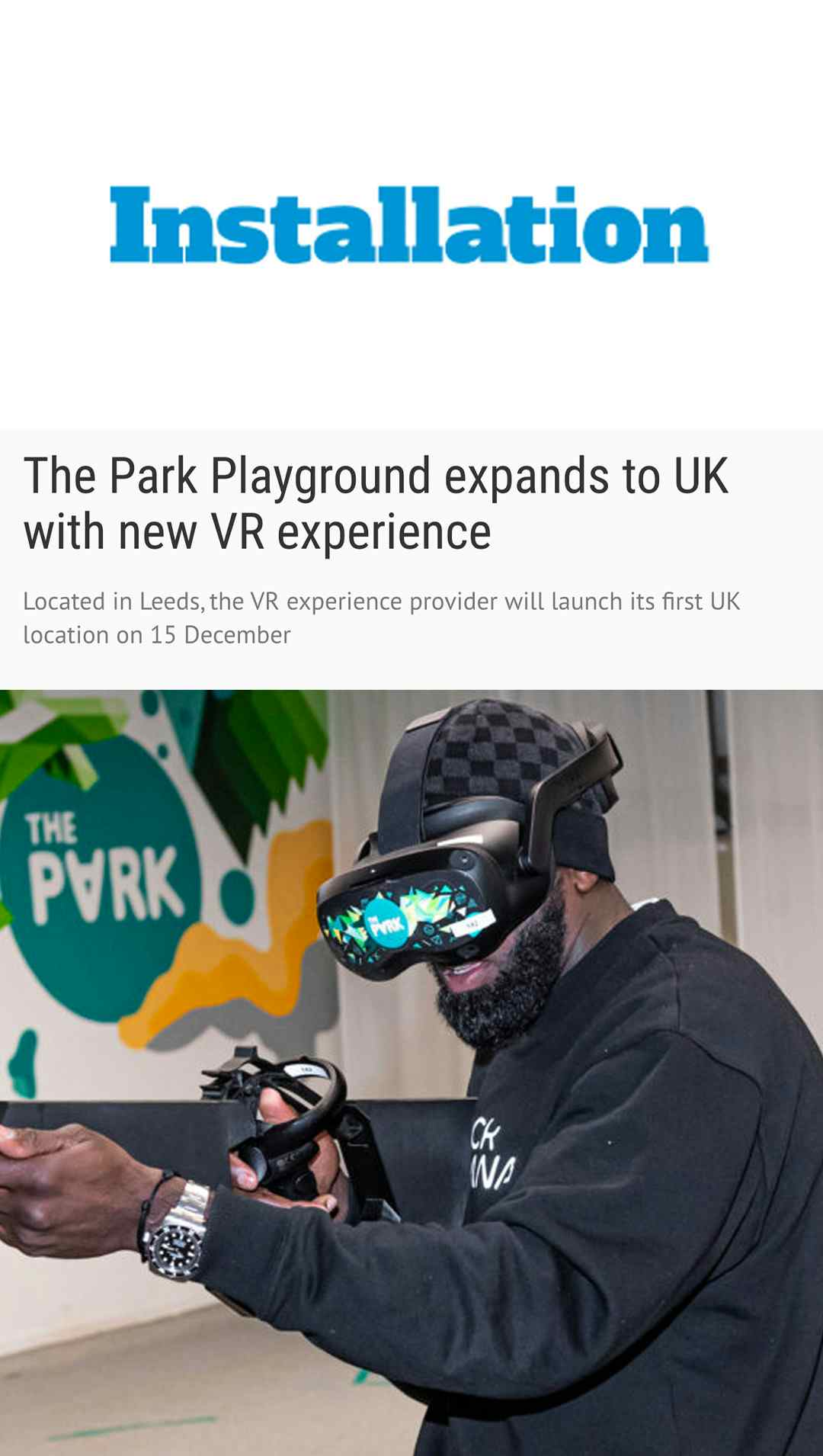Installation 17th January 2023 - Entering 2023, virtual reality (VR) is a term most people are probably familiar with or, at the very least, will have heard of. The global AR and VR market is expected to have an annual growth rate of 25.3%, reaching up to $114 billion by the year 2027. Recent statistics suggest that there are well over 171 million VR users worldwide and industries including healthcare, aviation, real estate, retail, and visitor attractions are integrating VR to accelerate customer engagement into the future. Despite this, virtual reality still remains a very niche market with the majority of the general population having never experienced VR first-hand. So, what will drive market innovation and bring VR to a mainstream audience?
In entertainment, the use of VR technology is still very much in its infancy for B2B, B2C and general consumer markets. However, a steady and promising annual growth of around 12.4% indicates that there is a huge window of opportunity to capture imagination and see which brands will rise as household names in the VR market.
LBE VR is one segment of the market that’s seeing a consistent rise in popularity, attracting visitors through its ability to provide social experiences and interactions within environments that they are unable to experience from their own home. In this sector, VR technology is well positioned to provide consumers with highly convincing experiences, made possible through low-latency and highly responsive technology. Despite guests being aware that the world they are seeing is not real, the elimination of delay allows the experience to feel extremely natural. Today’s technology in LBE VR is paving the way for the VR industry towards more advanced application designs that remove past pain points, like motion sickness, making it more attractive for users.
As a business in the LBE industry, we’ve learnt that although high-fidelity graphics are key, a complete sense of immersion is much more important to increase engagement levels. An early example of this ringing true is seen in the release of Nintendo Wii. While it didn’t possess enough computing horsepower to rival the striking graphics of big gaming brands at the time like Xbox and Playstation, it attracted mainstream players by their masses by providing games that were far more engaging. LBE VR is tapping into this by providing experiences that open the floor to a diverse group of users.
The ability of virtual and augmented reality to bring concepts to life in an exciting way make it well-matched for visitor attractions. It provides a lifeline for theme parks and museums by reinvigorating the experience and eliminating potentially negative factors such as queues and crowds. We’ve seen proof that VR experiences can solve these issues with projects like ‘Mona Lisa: Beyond the Glass’ that allow visitors to avoid the hordes of tourists and view details of the artwork that are otherwise invisible to the naked eye. Well-known museums around the world will continue to integrate VR for greater engagement and we’ll see more cropping up in the metaverse, like the new ‘Museum of Stolen Masterpieces’ that gives guests the chance to see exclusive artworks that have been lost to the public. Simply put, immersive experiences are transforming storytelling for visitor attractions.
A 2022 survey measured global interest in experiencing various museums as a virtual experience at just under a third (28%) and experiencing other attractions like zoos or safaris at 27%. The report also revealed that global interest in playing games or socialising in a virtual space were the most popular metaverse experiences, with GenZ and millennials being the most interested. This data tells us that VR technology will be especially key to visitor attractions to retain and attract new visitors. With the integration of innovative technology, LBE VR and visitor attractions should be considered crucial sectors within the market that will build a customer base for VR and propel it towards a mainstream audience.
Newer and emerging technology advancements have triggered VR developments, enhancing the way we shop, work, learn, play and socialise. 5G, artificial intelligence (AI), machine learning (ML) and Artificial Neural Networks (ANN), a learning algorithm, all provide exciting opportunities for VR. Integration of these technologies will continue to extend and enhance our virtual worlds by improving responsiveness, social interaction, graphical fidelity and other aspects that contribute to user enjoyment. Not only this, but implementation of these technologies will help businesses gain a competitive advantage and reduce operational costs. For sectors like retail, where some are promising Metaverse stores in the very near future, using ML to create a more intuitive virtual environment that’s personalised to the individual shopper is more likely to have a positive impact on sales.

